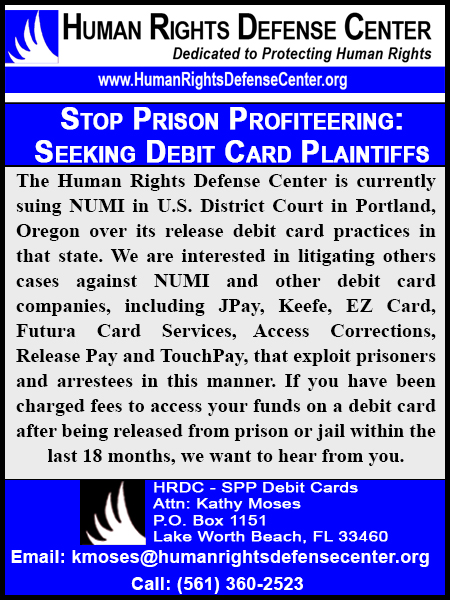Fifth Circuit: Admission of DHS Investigation Form G-166F at Trial Where Preparer of Form Did Not Testify Violates Confrontation Clause and Rule Against Hearsay
by Douglas Ankney
The U.S. Court of Appeals for the Fifth Circuit held that the admission of Department of Homeland Security (“DHS”) Investigation Form G-166F (“G-166F”) at Nicole Elizabeth Foreman’s trial where the preparer of the G-166F did not testify violated the Confrontation Clause of the Sixth Amendment to the U.S. Constitution and violated Federal Rules of Evidence (“FRE”) 801, 802, 803, and 805.
A Culberson County Sheriff’s Deputy initiated a traffic stop of a white Pontiac SUV. The driver of the SUV was Ira Cannon. Foreman was a passenger in the front seat. Nine men who appeared to be of Latin American descent were squeezed into the back. The deputy contacted Customs and Border Patrol (“CBP”). An agent from CBP interviewed the nine men and reported on the G-166F that they were all Mexican nationals. CBP also determined that Cannon was the leader of a human-smuggling operation and that Foreman was his assistant.
CBP turned the case over to DHS, which ultimately charged Foreman with Count 1: transportation of illegal aliens for financial gain (in violation of 8 U.S.C. § 1324(a)(1)(A)(ii)) and Count 2: conspiracy to transport aliens (in violation of 8 U.S.C. § 1324(a)(1)(A)(v)(I)).
Over Foreman’s objections, the trial court found the G-166F admissible under the “business records” exception to hearsay. FRE 803. The CPB agent who prepared the G-166F did not testify, but his supervisor, Ramon Saenz, did so. Saenz testified that the G-166F was a document generated by his agents “in all alien-smuggling cases and that it included the citizenship of all people involved in a case.” He further testified that, while he did not personally interview the men in the back of the SUV, he knew they had all been previously deported to Mexico. A copy of the G-166F was presented to the jury.
The jury convicted Foreman of both counts, and she timely appealed, arguing that admission of the G-166F violated the Federal Rules of Evidence and the Sixth Amendment.
The Fifth Circuit observed the “Federal Rules of Evidence generally forbid the admission of hearsay, i.e., an out-of-court statement offered to prove the truth of the matter asserted.” FRE 801(a), (c) and FRE 802. A “business exception” exists to the rule against hearsay. FRE 803(6). In the present case, the Government argued, and the U.S. District Court for the Western District of Texas agreed, that the CBP used the G-166F “in its ordinary course of business and thus it falls into the business record exception to the hearsay rule.” Consequently, the District Court admitted the G-166F into evidence.
But the Court determined that the G-166F presented a double hearsay problem. See FRE 805 (“Hearsay within hearsay is not excluded by the rule against hearsay if each part of the combined statements conforms with an exception to the rule.”). First, the G-166(F) was neither an affidavit nor was it sworn to. Second, it contained both the out-of-court statements of the CBP agent and the out-of-court statements of the nine men found in the SUV. The Court explained: “the G-166F is precisely the sort of criminal investigation report the Federal Rules of Evidence prohibit.”
The Advisory Committee’s statement on the business records exception states: “If … the supplier of the information does not act in the regular course, an essential link is broken; the assurance of accuracy does not extend to the information itself, and the fact that it may be recorded with scrupulous accuracy is of no avail. An illustration is the police report incorporating information obtained from a bystander: the officer qualifies as acting in the regular course but the informant does not.” FRE 803(6) Advisory Committee’s note to 1972 proposed rule.
The Court explained that the G-166F is not “essentially ministerial” like other forms that have been admitted by courts as exceptions to the rule against hearsay. See United States v. Noria, 945 F.3d 847 (5th Cir. 2019) (“[T]he Court distinguishes between law enforcement reports prepared in a routine, non-adversarial setting, and those resulting from the arguably more subjective endeavor of investigating a crime and evaluating the results of that investigation. The former are admissible, while the latter are not.”). Thus, the Court concluded that the District Court abused its discretion in admitting the G-166F under the business record exception.
Turning to the Confrontation Clause of the Sixth Amendment, the Court observed criminal defendants have a constitutional right to confront the witnesses against them. “A district court must accordingly ensure that a defendant can challenge her accusers ‘in the crucible of cross-examination.’” Crawford v. Washington, 541 U.S. 36 (2004). “[T]he government bears the burden of defeating a properly raised Confrontation Clause objection by establishing that its evidence is non testimonial.” United States v. Duron-Caldera, 737 F.3d 988 (5th Cir. 2013). “A defendant deprived of the right to confront witnesses against [her] is entitled to a new trial unless the government proves beyond a reasonable doubt that the error was harmless; that is, that there was no reasonable possibility that the evidence complained of might have contributed to the conviction.” Id.
In determining whether an evidentiary ruling violated the Sixth Amendment, the Court asks three questions: “First, did the evidence introduce a testimonial statement by a non-testifying witness? Second, was any such statement offered to prove the truth of the matter asserted? Third, was the non-testifying witness available to testify, or was the defendant deprived of an opportunity to cross examine him?” United States v. Hamann, 33 F.4th 759 (5th Cir. 2022). If the answer to those three questions is “yes,” a Confrontation Clause violation is established and vacatur of the conviction is required unless the government proves the error was harmless, according to the Court. Id.
Turning to the present, the Government conceded the second and third questions, so the focus was on the first question. As to that question, “a statement is testimonial if its primary purpose is to establish or prove past events relevant to later criminal prosecution.” Hamann. And “the Supreme Court has said that statements that investigating officers gather during their investigation are testimonial and require the right to confrontation.” Davis v. Washington, 547 U.S. 813 (2006). Apply those principle to this case, the Court stated that the very name of the G-16F—“DHS Investigation Form”—demonstrated it was for investigative purposes to establish “past events relevant to later criminal prosecution.” Therefore, the Court concluded that it was testimonial in nature, and Foreman established a Confrontation Clause violation.
The Court then stated that “if the unconstitutional evidence speaks to a contested element of the offense, we are more likely to find that the defendant suffered harm from the error.” Hamann. The Government used the G-166F to establish the first of the three elements of 8 U.S.C. § 1324(a)(1)(A)(ii), i.e., “an alien was in the country illegally.” The Government argued that Saenz’s testimony that he knew the nine men had previously been deported to Mexico established that element. But the Court stated we “do not ask whether the evidence remaining after excision of the tainted evidence was sufficient to convict the defendant.” Hamann. “Instead, the government must show that there is no reasonable possibility that the information in the G-116F contributed to the jury’s verdict.” Duron-Caldera. The Court concluded the Government failed to establish that the error was harmless beyond a reasonable doubt as to Foreman’s conviction on Count 1.
As to Count 2, the Court observed that conviction for the conspiracy did not require the Government to prove that “an alien was in the country illegally.” Conspiracy requires only that “(1) two or more people directly or indirectly agreed to transport an alien within the United States; (2) the defendant knew of the agreement; and (3) the defendant joined the agreement willfully.” 8 U.S.C. § 1324(a)(1)(A)(v)(I). Consequently, the tainted evidence had no bearing on the Count 2 conviction.
Accordingly, the Court vacated the Count 1 conviction, affirmed the Count 2 conviction, and remanded for resentencing. See: United States v. Foreman, 84 F.4th 615 (5th Cir. 2023).
As a digital subscriber to Criminal Legal News, you can access full text and downloads for this and other premium content.
Already a subscriber? Login
Related legal case
United States v. Foreman
| Year | 2023 |
|---|---|
| Cite | 84 F.4th 615 (5th Cir. 2023) |
| Level | Court of Appeals |
| Appeals Court Edition | F.4th |





